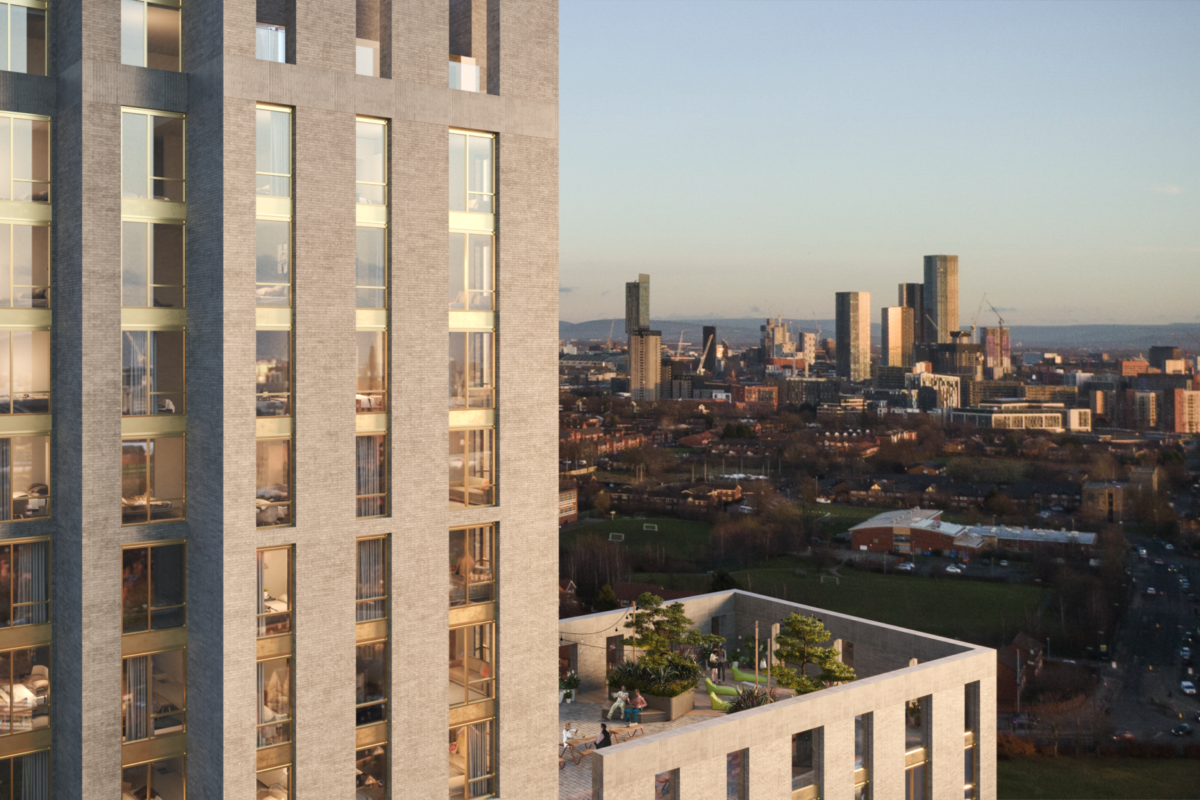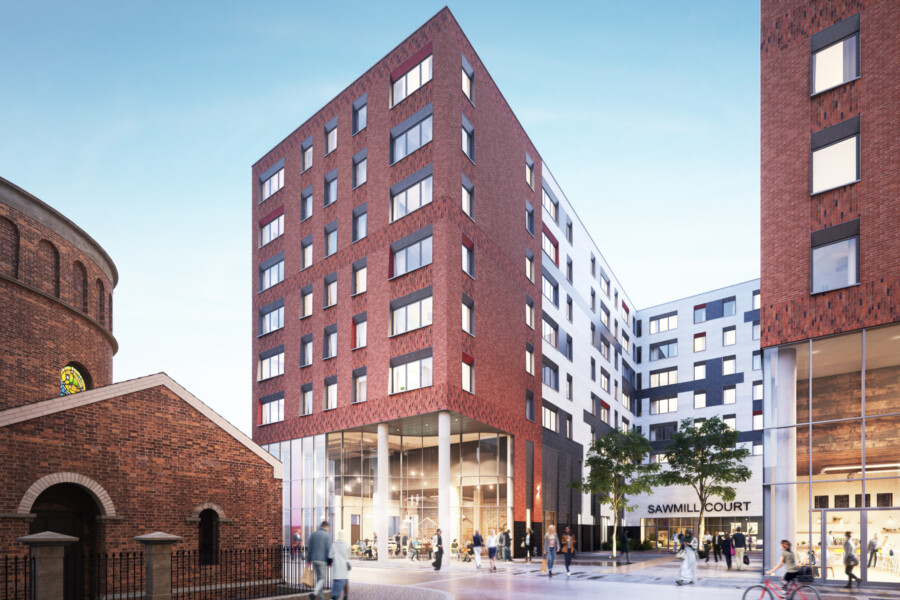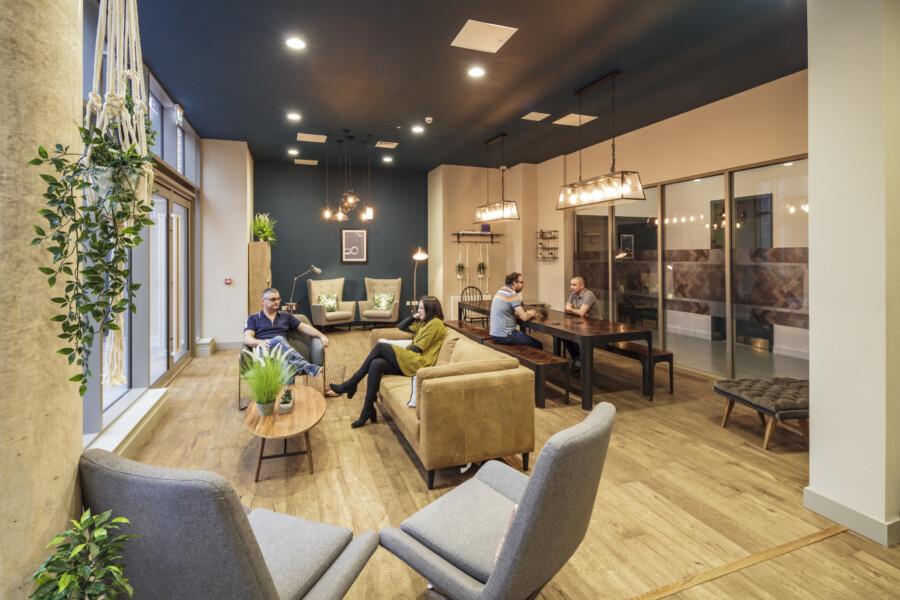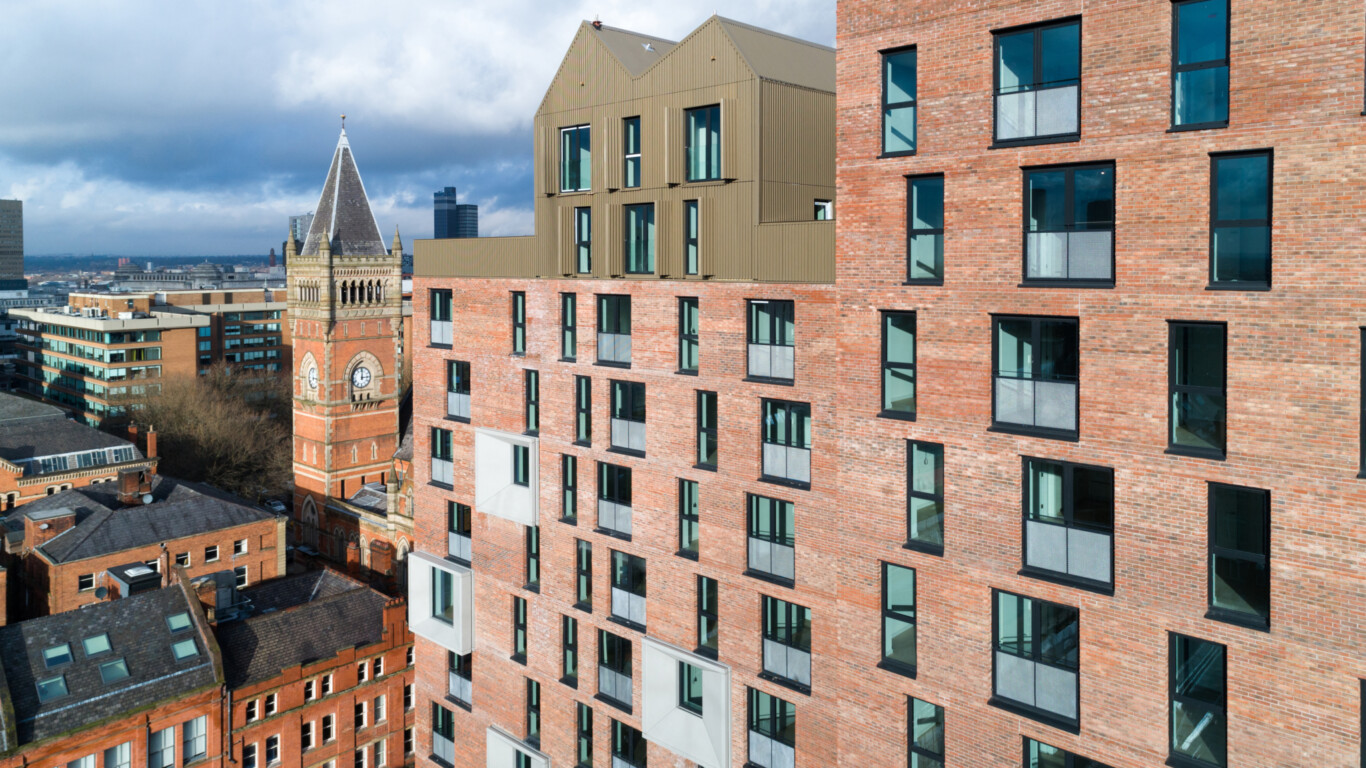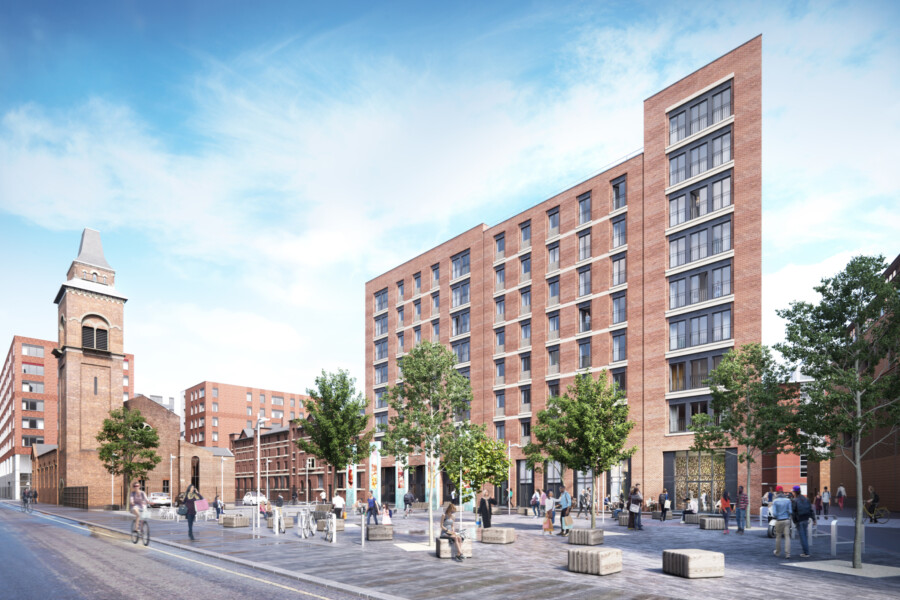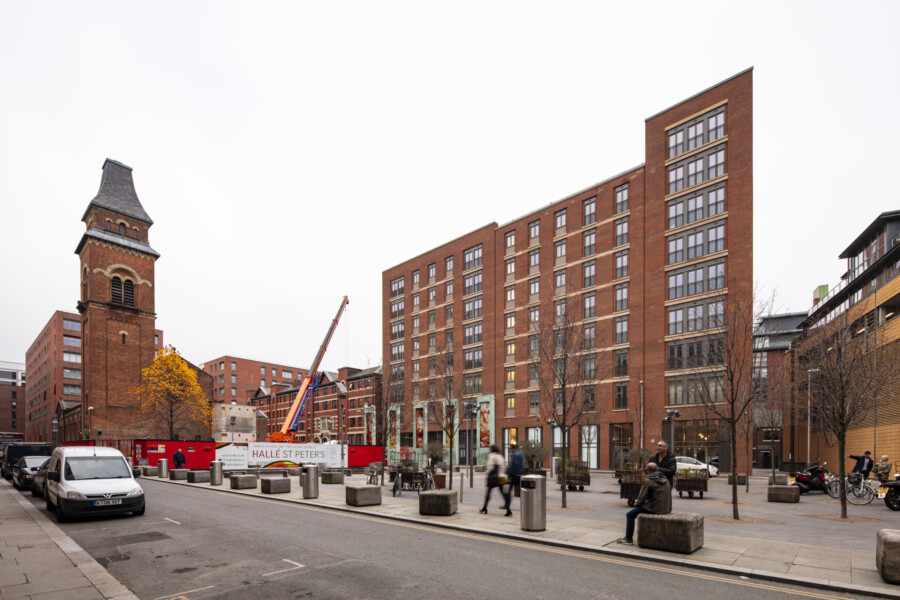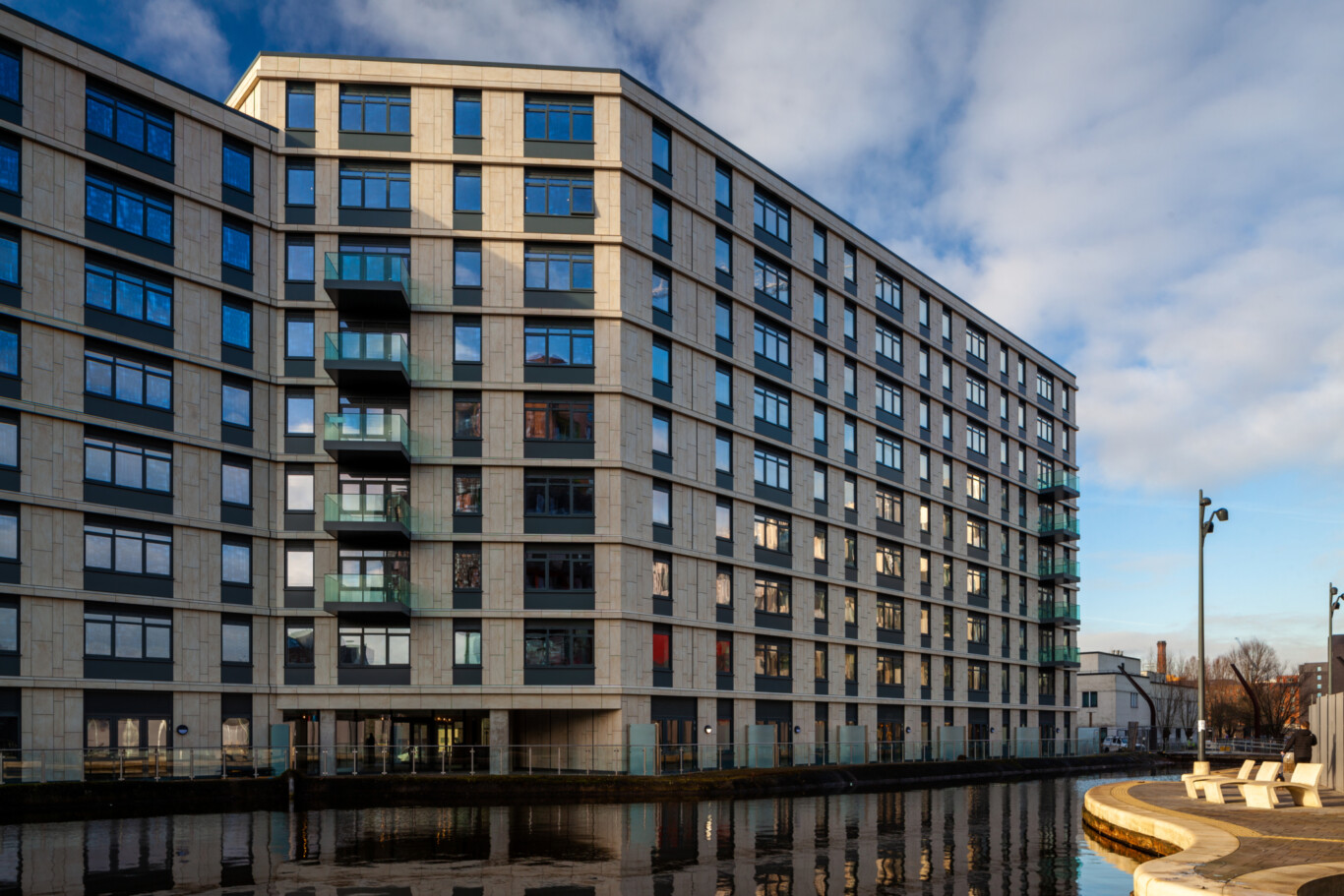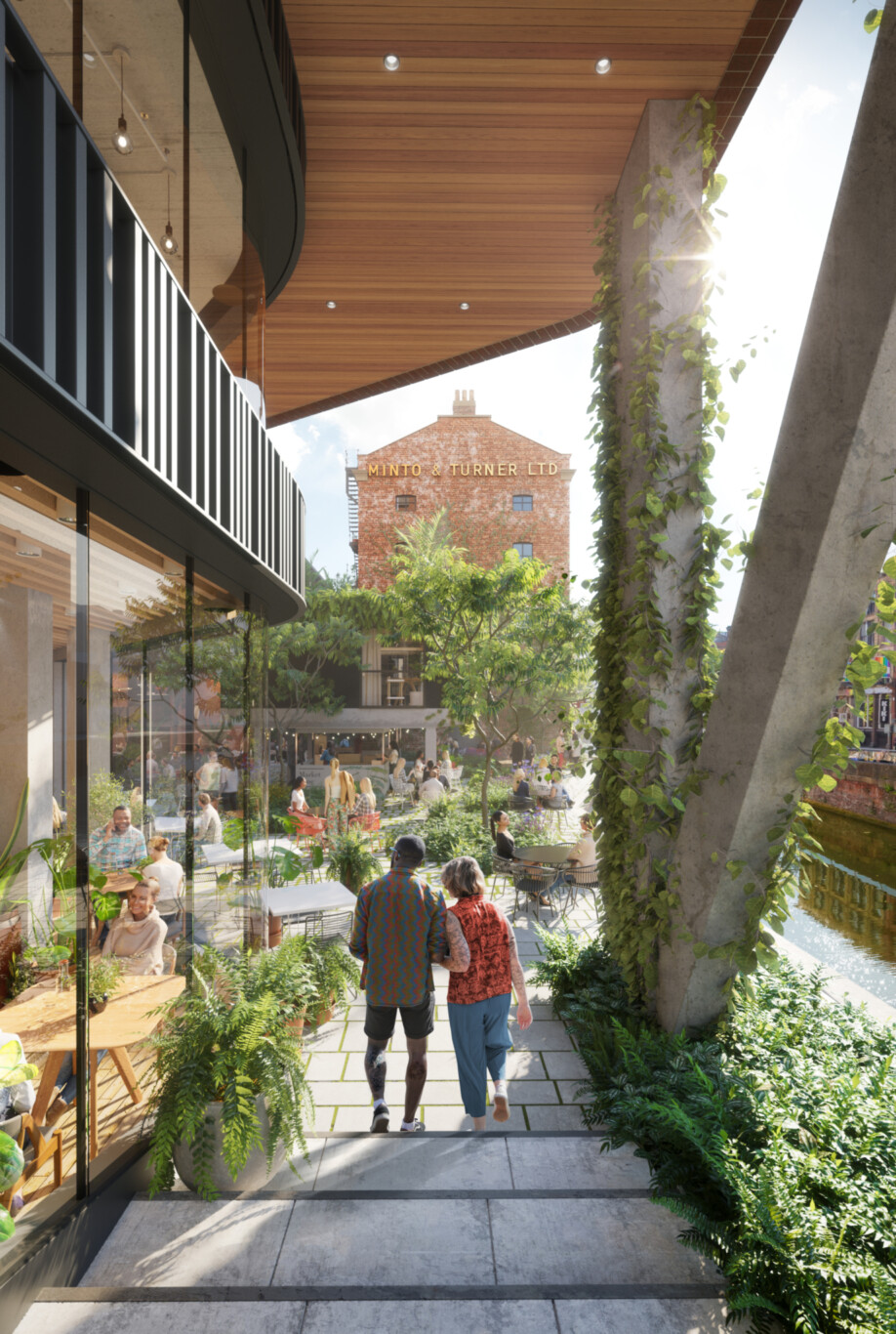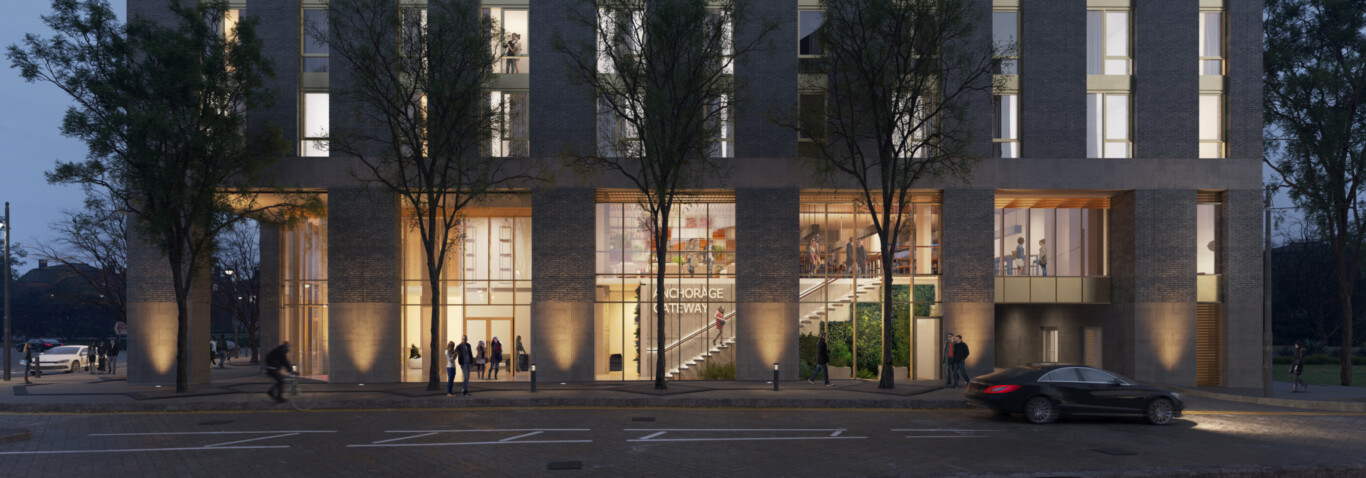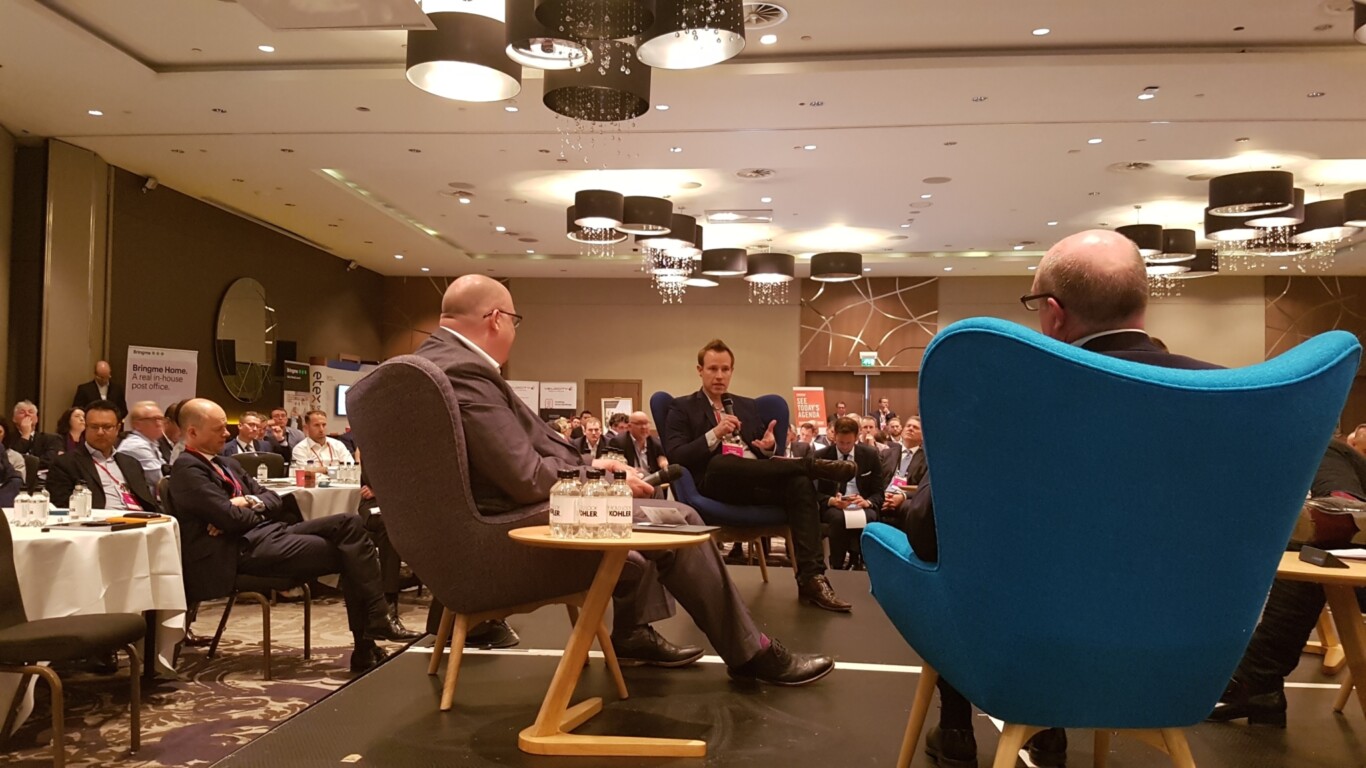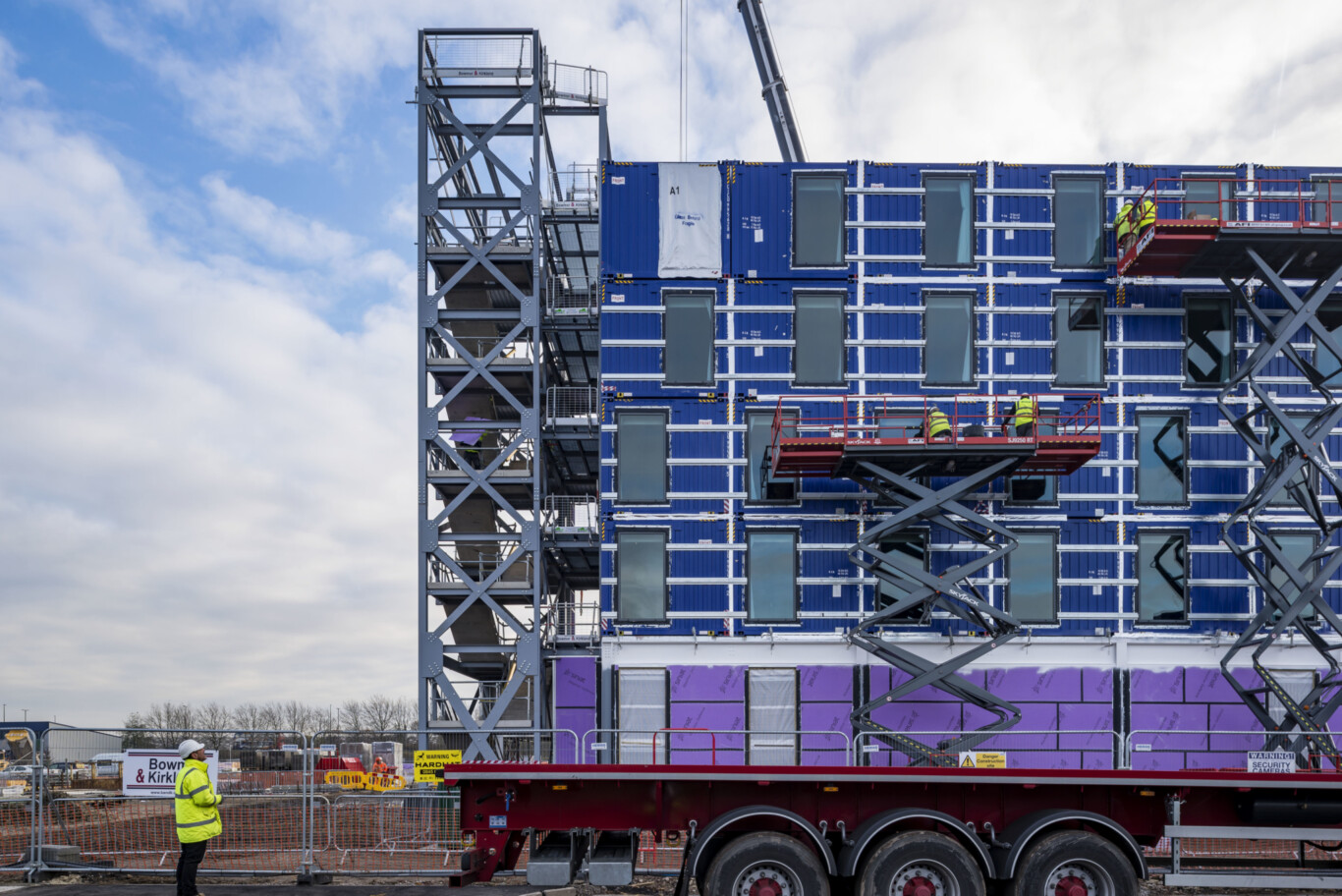
People Profile: Director Michael Swiszczowski on helping to build Chapman Taylor’s strong reputation in the Residential sector
Residential Director Michael Swiszczowski joined Chapman Taylor’s Manchester studio at the beginning of 2016, becoming an Associate Director in 2016 and a Director in 2019. Michael has worked on several of our key residential projects and has been very active in promoting our residential expertise, particularly in the Build-to-Rent and student accommodation typologies. He is also a regular speaker at residential and off-site manufacture conferences, where he articulates Chapman Taylor’s residential design approach and skillsets. In this profile, Michael talks about why he became an architect, his unique experience working as a Part I student in America and his role helping to consolidate Chapman Taylor’s reputation in the residential sector.
Tell us about your early life and route into architecture as a career.
I was born in Stevenage in Hertfordshire (in the same hospital as Lewis Hamilton) but moved to Bradford in West Yorkshire when I was three years old with my family (halfway between my two sets of grandparents in Scotland and Bournemouth).
As a child, I always enjoyed building things, and was constantly drawing, so I was set on my career being design-related. I chose architecture because it seemed a well-established profession with good prospects which would allow me to express my love of design as well as my interest in all things technical.
I arrived at the University of Sheffield, where I studied Architecture, without a strong understanding of how it worked as a career, because I had no connections in the industry. Their open day fully convinced me that I wanted to study the subject, and I fell in love with the city and the university itself.
Where did your architectural career begin?
I got my first architectural job between the second and third years – I approached a small architectural firm, Priest Woodward Associates (now Design Studio North), and they gave me a summer job. It was a fantastic experience to feel that I was being paid to “play” with designs on computers, particularly compared with my previous work on building sites. I worked on designs for schools, mosques, churches and community centres while I was there.
After graduating in 2006, I applied for jobs in California in the hope of fulfilling a childhood dream of mine to live and work there. A firm in Newport Beach, Orange County, eventually contacted me to say that they loved my CV and asked me to talk to them by phone. On the strength of the technical side of what I had done at Priest Woodward, where I had returned to work whilst looking for employment in California, they set up another call to discuss the practicalities of me working over there. Once they were assured about that, they offered me a position.
Tell us about that experience
My time working in California was incredible – not just because of the warm climate! I had to live with my employer for the first three months because I had to get a social security number, driving licence and car before I could rent somewhere to live. He lived in what I considered to be a mansion, in a gated community on a well-known golf course, as well as having a jacuzzi and swimming pool in the back garden! We commuted to work together, so I got a lot of one-on-one time with him, which I believe was pivotal to me in these formative years. We are very good friends to this day and his family have since come over twice to visit.
The firm specialised in retail projects, which in Southern California translated as strip malls and flagship stores in downtown Los Angeles. I got to experience two projects all the way from concept design through to practical completion, on which I was given a lot of responsibility and the discretion to make a lot of decisions on site. I was promoted three times while working there, eventually becoming a project manager responsible for numerous projects and team members.
The most enjoyable project was in Oxnard, north of Malibu, because the client (who was quite young) and I built a good relationship – he often flew us to site meetings in a private jet! I also enjoyed the drive – I had a Mustang Convertible, which I loved driving along the Pacific Coast Highway and Route 101 to the site or to the local city hall to ‘submit’ rolls upon rolls of printed, ‘wet signed’ drawings for the necessary permits.
The experience was very different from what my friends were experiencing in the UK as Part I students, and I credit it with really boosting my career. I decided to take two years out instead of one because of the experience I was acquiring (and the fun I was having).
You must have had quite a culture shock returning to the UK!
I returned in mid-2008 just as the UK economic crash was taking grip – I couldn’t find any UK summer work before I was due to return to university that October, so I went through the tortuous US visa process once again to spend another 10 weeks working back in California. I debated with myself whether I should make a life in California or return to the UK permanently, but I decided that qualifying as a RIBA-accredited architect was very important given the esteem in which that qualification is held internationally.
What were your next steps?
The economy was still poor when I graduated from the University of Sheffield with my master’s degree in 2010 and the only work available seemed to be in London. I wrote to several companies and was invited to interview by Sheppard Robson, where I was offered a job as a Part II student even though they weren’t taking anyone on at that time – my Part I experience in America was crucial to that decision by them.
I was ambitious and wanted to qualify as quickly as possible, doing so while working as a project architect on the large, award-winning Barking Riverside masterplan in London. I then worked on a 30-storey residential tower in London, which I really enjoyed. I owe a great deal to the people with whom I worked closely at Sheppard Robson’s London office, who inspired me and taught me a lot.
However, I had been long-distance dating my now-wife, who was still in Sheffield, and we decided to relocate to Manchester (where she would study for a doctorate in Clinical Psychology at nearby Lancaster University). I transferred to Sheppard Robson’s Manchester office and we bought a house in the suburbs.
Why did you join Chapman Taylor?
I was headhunted at just the right time – I was contacted while on a project which was completing after three years. I was intrigued by the ambition expressed by Chapman Taylor in terms of what it wanted to achieve in the residential sector and, crucially, how they hoped I could help them with this.
I met (Main Board Director) Tim Partington and (UK Board Director) Andy Carroll in September 2015, who outlined their vision for the future of the Manchester studio and Chapman Taylor’s place in the residential sector. It was a very honest conversation, with a clear exposition of Chapman Taylor’s strengths and weaknesses as they were perceived at that time, and a strong vision for what the next steps should be.
What did you work on first?
My first scheme was a hospitality project – the award-winning, 220-bed Holiday Inn Express in Trafford City, which was a volumetric modular project constructed from purpose-built steel containers complete with factory-finished interior fixtures and fittings. This was a strategic decision by Chapman Taylor because it was a great opportunity to acquire experience of off-site construction, which is an increasingly prominent method of residential development.
I ran the project from the point at which the modular system was introduced to completion, and it was delivered on time and on budget. We established a great relationship with both the developer and main contractor involved in that scheme, and that has led to a number of new projects. The scheme also led us to develop our Umbrellahaus® modular residential concept, which helped us to establish Chapman Taylor’s credentials in the modular residential sector.
I was promoted to Associate Director in the summer of 2016 (becoming a Director in 2019), becoming increasingly involved in residential projects as Chapman Taylor's UK strategy of pivoting towards more and more residential work with new clients began to really yield results.
Tell us about the residential projects you have worked on.
In 2016, we secured the commission to deliver Sawmill Court, a Manchester Life Development Company Build-to-Rent apartment scheme on the eastern side of Manchester city centre. We developed the detailed design created by the concept architect for the principal building contractor Eric Wright Construction. I was involved in client discussions, presentations and planning, but generally just supported our very competent team as it delivered the project.
As a result of our successful involvement in that scheme, we were appointed to deliver another Eric Wright Construction residential project being developed for Manchester Life – One Cutting Room Square, a scheme of 28 apartments and three townhouses in the Ancoats Conservation Area. The same team then appointed us to deliver One Vesta Street, completed in early 2020, which provides 169 apartments and three townhouses in New Islington.
Has there been a standout development?
One project we believe to be a step-change for the Manchester studio is Kampus, which we are delivering for Capital & Centric, HBD and Mount Anvil. The prominent city centre site, formerly part of Manchester Metropolitan University, will see over 500 apartments being delivered in a great blend of new-build and refurbished buildings, plus a mix of flexible, commercial spaces. We won the job, one of the best residential projects in Manchester city centre, against stiff competition in 2016. Our involvement in the project, has massively boosted our profile in the residential sector.
Sawmill Court and Kampus are both Build-to-Rent projects. When we became involved with them in 2016, Build-to-Rent was beginning to gain popularity as a development sector, so our role has allowed us to help shape the discussion about the sector and its future, as well as making us go-to names in the field for those who want to know more.
How well established is Chapman Taylor in the residential sector now?
Chapman Taylor is an increasingly strong name in the residential sector – for example, we are now active in what is known to some as Build-to-Rent version 4.0, the latest wave of developments in the sector, including designing Anchorage Gateway, a 29-storey, 290-apartment residential scheme at Salford Quays.
We currently have a lot of residential work across the UK involving all three of Chapman Taylor’s UK studios – including Friary Park in London, our involvement in which stemmed from our work at Kampus, and Castle Park View in Bristol city centre – and we have won a lot more design work in particular, much of which we are unable to talk about just yet, which was always a core aim. We continue to provide Executive Architect services too, such as on two residential towers at the MeadowSide development in Manchester.
As well as designing schemes in our UK studios’ respective ‘home towns’, we have early-stage involvement in a number of schemes across the regions, one pivotal example being a 350-home Build-to-Rent residential development at Flax Place in Leeds. Designed by Chapman Taylor, Flax Place is a well-located apartment scheme with 11- and 15-storey towers.
We are also exploring residential opportunities in Lancaster, Derby, Coventry, Bolton, Peterborough, Gloucester, York and Liverpool, and we have even had an enquiry relating to a pioneering Build-to-Rent development in New Zealand.
What has been most satisfying for you about the success of Chapman Taylor’s residential strategy?
The last four years have vindicated an almost romantic view of how to build a business with a clear, considered and honest strategy – diversifying our expertise, building relationships and having faith in the talents of our team. That is very gratifying to have seen.
I am very proud to have been part of the team during this process, and our success has surpassed the expectations I had when I began in 2016. It has been a lot of hard work, but I have always felt supported in my goals and in what I do by everyone in the business. That has given me the space to go out and achieve results, which I greatly appreciate. Every single day is interesting, and I love my job.
What is next?
We have quite bold targets – it is always good to aim high! We want to continue to win work and to grow our team. We would like to win more projects in London now that we have started to establish a strong name there for residential expertise, as well as in Bristol and Manchester. We also want to win more student accommodation work and to expand our Build-to-Rent portfolio to smaller cities and towns.
This is all part of the broader Chapman Taylor strategy of anticipating market trends and diversifying in response to them – our residential expertise will be an important core aspect of that evolution, but so will our office, transport, leisure and mixed-use expertise. We are a company which thrives on flexibility and collaboration, and we greatly benefit from being able to draw on skills and resources from across teams and across our global studios.
